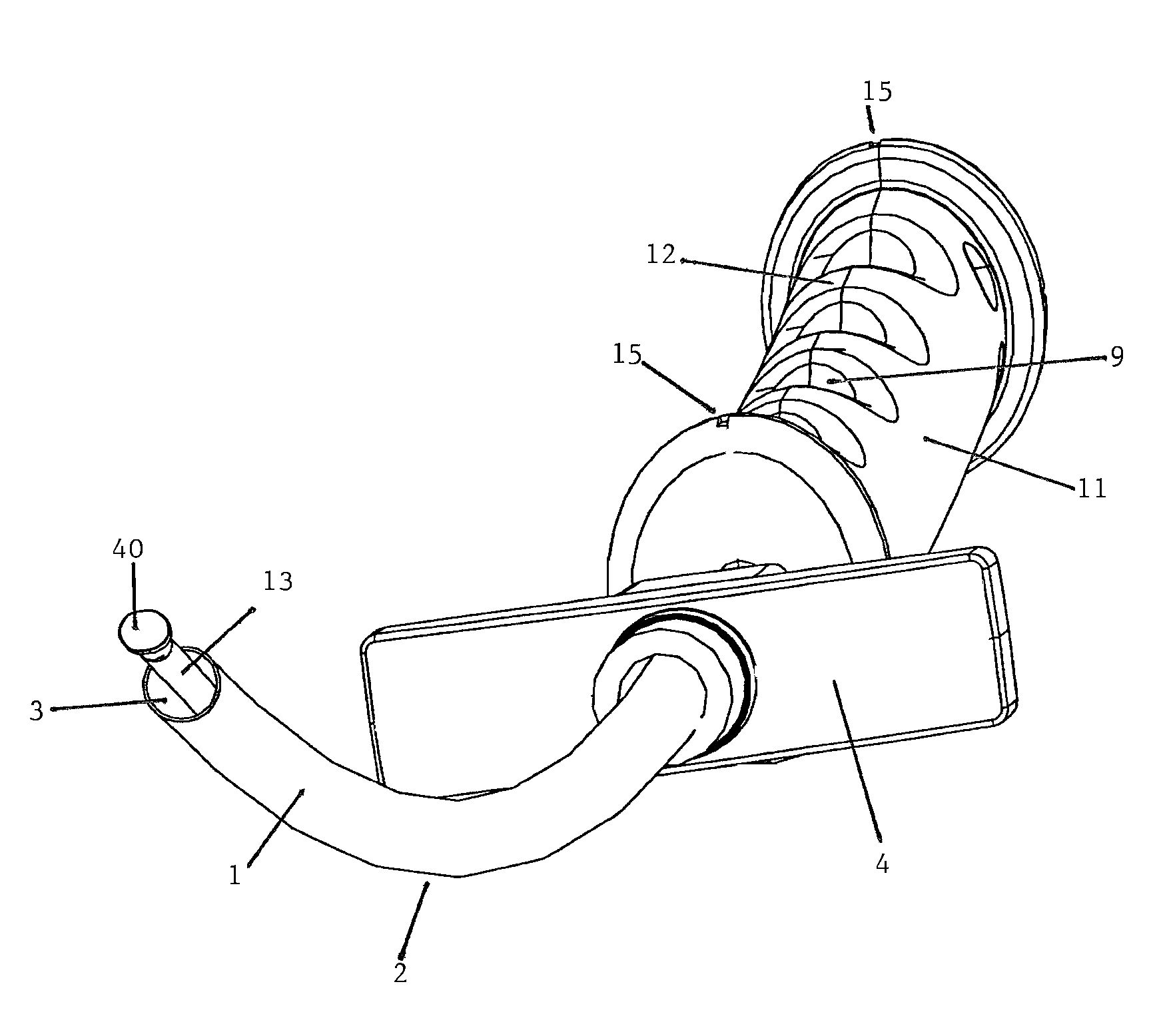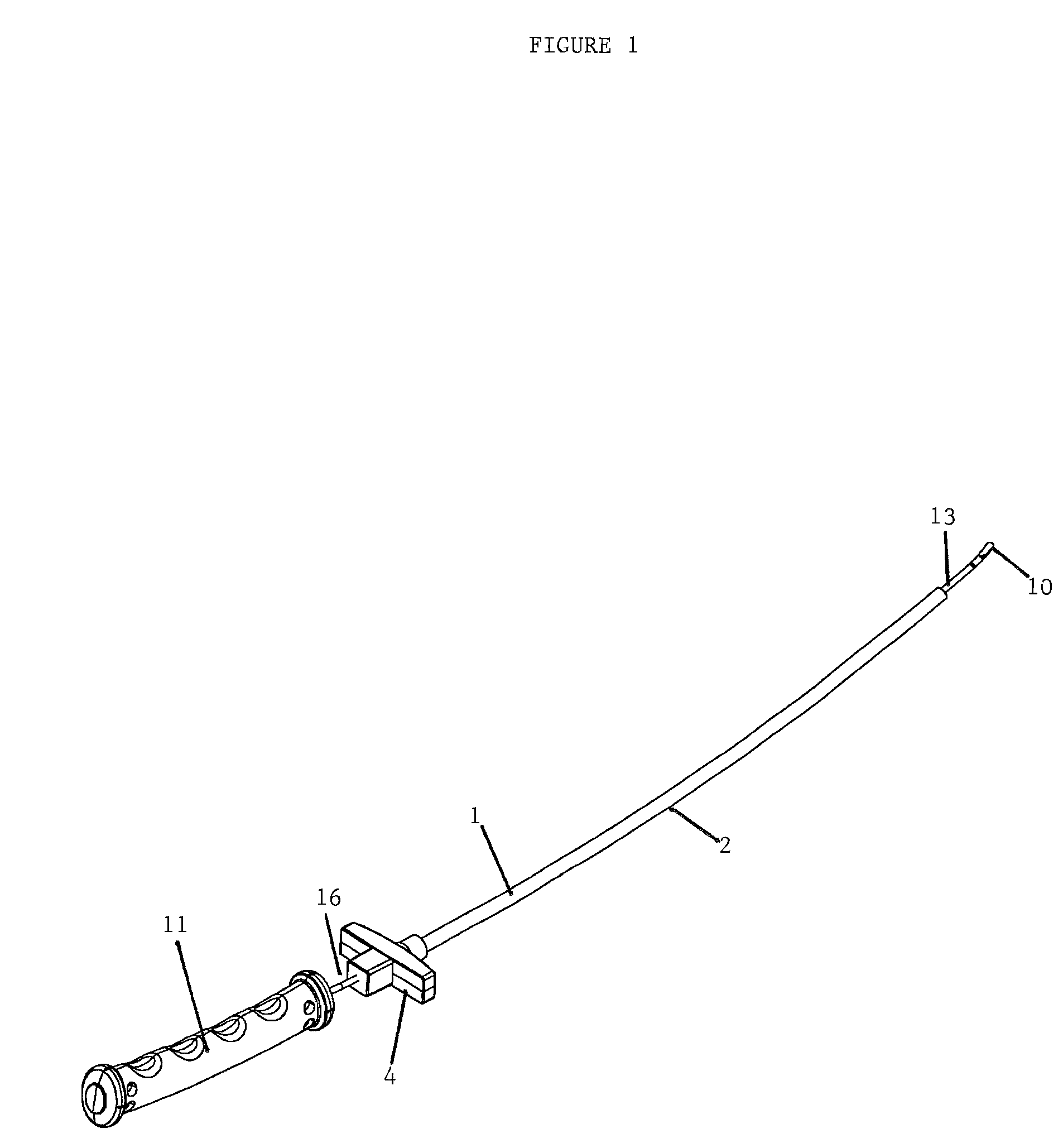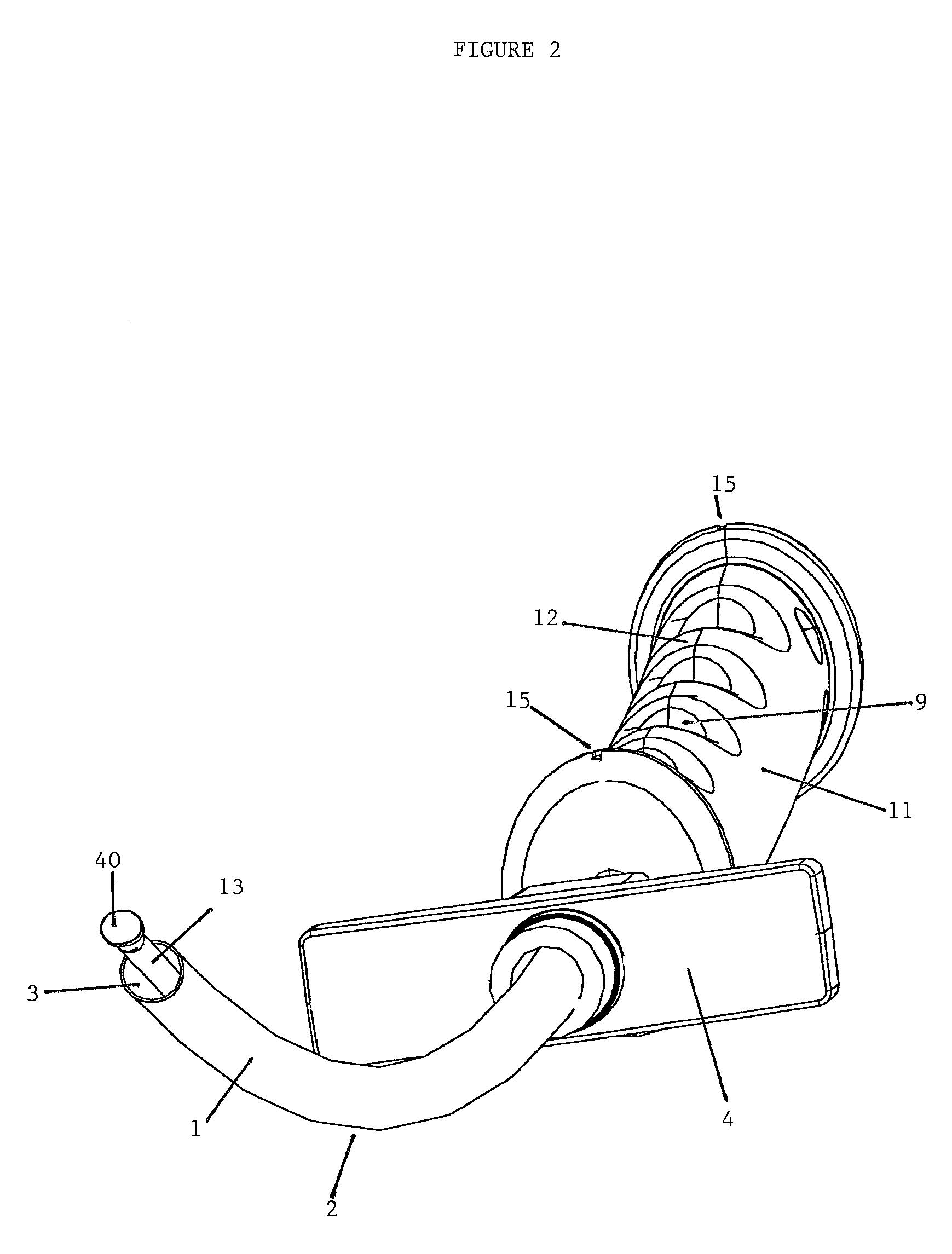Bone preparation tool
- Summary
- Abstract
- Description
- Claims
- Application Information
AI Technical Summary
Benefits of technology
Problems solved by technology
Method used
Image
Examples
Embodiment Construction
[0036]The present invention allows a physician, surgeon, or medical professional (used interchangeably herein) to prepare a bone for treatment, predictably, and in a controlled manner. By employing the aspects of the present invention, a surgeon can access the interior of a bone and prepare a bone to receive treatment. The present invention gives a surgeon a tool with which to minimize damage to surrounding tissues but optimize preparation options. The bone preparation tips provided with the present invention meet the needs of the surgeon in preparing tissue by accessing its naturally occurring anatomical position. In the past, aspects of the bone and tissue surfaces that required treatment preparation were not immediately accessible outside the line of the cannula. While using minimally invasive procedures, the present invention allows a physician to treat tissue outside the radius or peripheral region of the cannula lumen which was previously inaccessible without deformable or art...
PUM
 Login to View More
Login to View More Abstract
Description
Claims
Application Information
 Login to View More
Login to View More - R&D
- Intellectual Property
- Life Sciences
- Materials
- Tech Scout
- Unparalleled Data Quality
- Higher Quality Content
- 60% Fewer Hallucinations
Browse by: Latest US Patents, China's latest patents, Technical Efficacy Thesaurus, Application Domain, Technology Topic, Popular Technical Reports.
© 2025 PatSnap. All rights reserved.Legal|Privacy policy|Modern Slavery Act Transparency Statement|Sitemap|About US| Contact US: help@patsnap.com



